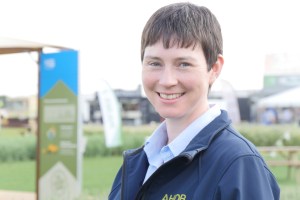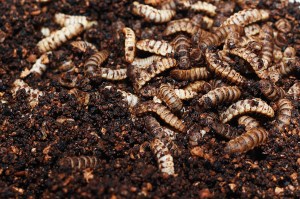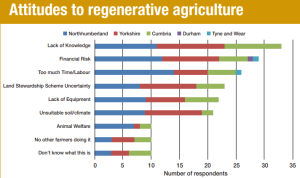Through the adoption of novel practices and technologies, agriculture has a significant part to play in hitting greenhouse gas emissions reductions targets. CPM finds out how a recent initiative has identified key priorities in the drive to net zero
“There’s a requirement for an honest broker of information, because there’s a lot out there and some is coming from those with commercial interests.”
By Adam Clarke
A recently completed set of mini projects has identified interesting and important ways to help agriculture in its ambitious drive to carbon neutrality. It’s hoped the outcomes and spin-off research will not only help in the context of climate change mitigation, but also help farm businesses and the environment as they strive for sustainability.
Late in 2021, a joint initiative between AHDB and the Biotechnology and Biological Sciences Research Council (BBSRC) published a call for ideas to improve the resilience of UK agriculture and help the industry reach net zero.

The projects selected in the AHDB/BBSRC mini-call were short-term ‘pump priming’ projects designed to test ideas or generate data which could then support applications for larger, longer-term projects, says Amanda Bennett.
AHDB’s environment scientist Amanda Bennett says the aim was to collaborate with BBSRC to support researchers on topics most relevant to UK agriculture today with funds from its Farm Sustainability Fund.
Shedding some light on the process, she explains that when the application period ended, all potential projects were assessed by a panel that included academic and industry experts, which whittled them down to 10 that would receive up to £50,000 each.
Leaders of the projects would then have three months to investigate the chosen topic area and preliminary findings would underpin high-quality proposals to take forward for further funding through UK Research and Innovation (UKRI).
It was also hoped the projects would help researchers engage more effectively with AHDB and UKRI funding for research and improved knowledge exchange, she adds.
“These were short-term ‘pump priming’ projects designed to test ideas or generate data which could then support applications for larger, longer-term projects, funded by BBSRC or other sources. Some of the projects were more fundamental and will have a benefit over time and others were more practical, so will be applied quickly and more easily,” explains Amanda.
Linking all the projects together is government ambition to get to net zero by 2050 and the more ambitious target set by the NFU for 2040. For these ambitions to be met, individual growers will have to significantly reduce their greenhouse gas emissions to help the wider industry.
While some may ask why they should change their practices, in most cases any emissions reduction will result in economic benefits to the grower and environmental benefits at a local and landscape scale, she believes.
“These benefits might come through optimising macronutrient inputs, with one of the Net Zero Partnership’s 10 projects assessing the use of an available soil phosphate test kit to fine tune nutrient planning.”
Others have explored novel tools or technologies for use in integrated pest management (IPM), such as automatic monitoring of nocturnal crop pest activity and best practice for tank-mixing for effective use of biopesticides.
Amanda goes on to say that there has also been some more fundamental research, with projects exploring improved disease resistance in crops like spring barley.
“The outcomes will feed into breeding programmes, so not immediately available. However, in the long-term it will help reduce fungicide input,” she adds.
Another project topic amongst the 10 that’s unlikely to have immediate impact, but has huge potential to contribute to sustainability targets, is the use of chitinous biowaste to improve soils.
Chitin is the second most abundant polysaccharide biopolymer after cellulose, and its name is derived from the Greek word for tunic or envelope, which hints at its primary role in the exoskeletons of arthropods.
Several other microorganisms also have chitin in their cell walls, membranes, and spores, including fungi and the spines of diatoms (single cell algae).

There’s evidence that applying chitin, or a derivative known as chitosan, in the presence of plants acts as a plant defence elicitor, helping to reduce the impact of crop diseases, says Matt Back.
A project was led by Harper Adams University’s Dr Matt Back and Dr Andy Evans of Scottish company Angus Horticulture, a firm that has been experimenting with chitinous compost made from mixing shellfish waste and woodchip over recent years.
Matt says other potential sources of chitin identified in the project include mushroom substrate, a material that contains spent compost and mushrooms, with the fungi we eat rich in chitin. The third is a by-product of protein production for feed using black soldier fly larvae, with the larval cases and excrement left over after processing also rich in chitin.
“When we saw the AHDB were looking for project proposals linked to net zero, we felt we could write a research proposal based on these products being part of the circular economy. However, we needed to understand more about the science and the research that supports its use in agriculture as a soil conditioner,” explains Matt.
The review found significant number of potential benefits in published literature, along with some knowledge or regulatory gaps that will have to be addressed before large scale adoption.
As a nematologist, one area that Matt was particularly interested in is the potential of chitin for suppressing potato cyst nematode (PCN) and other plant parasitic nematodes present in UK soils. There are also refences to reductions in soil-borne pathogens, such as Rhizoctonia solani (black scurf), Verticillium wilt and wart disease, a notifiable disease of potato. Matt says there may also be an effect on wireworm larvae if chitin is applied to infested soil.
One theory is that adding it to soils will select for specific soil microbes that break chitin down. As PCN eggs contain a layer of chitin in their casings, the upregulation of the microbes could help speed up population decline between potato crops, explains Matt.
“It seems that you would have a shot at suppressing anything that has chitin in its cell walls,” he adds.
“Another hypothesis is that this surge in soil microbial activity to break down the chitin causes a release of ammonia, creating a toxic environment for pests and pathogens. Furthermore, there’s evidence that applying chitin, or a derivative known as chitosan, in the presence of plants acts as a plant defence elicitor, helping to reduce the impact of crop diseases.”
Synergistic effects of chitin with Mycorrhizal fungi and Bacillus subtilis were uncovered in the literature review, opening the possibility of using the substance to create a better soil environment for these organisms to thrive.
“Chitin is also porous, so could help with water retention in soils, and has a nutritional value that can benefit crops. I wasn’t expecting such a wide range of activities and uses before starting the review. It’s now about finding the best way to use some of these by-products in a rotation,” explains Matt.
A Harper Adams University PhD proposal aims to answer some of these questions by comparing the three by-products with pure extracted chitin and chitinase side-by-side to further quantify and validate effects at varying concentrations.
Developing a method of evaluating chitinase activity, which is the enzyme produced as chitin is broken down in the soil, is also an aim, along with further work in the synergistic effects with Mycorrhizae and B. subtilis.
Legislation and regulatory procedures also will have to be addressed, because currently rules are largely designed to ensure animal waste and other commonly used products, like sewage sludge and digestate, are applied to agricultural land appropriately.
This leaves a grey area for novel products like organic soil amendments derived from shellfish or black soldier fly larvae. “The use of these materials won’t go anywhere without the correct checks and balances in place,” explains Matt.

Chitin could prove to be a useful soil amendment and one of the sources being looked at is the larval cases and excrement from black soldier flies left over after processing.
From a leftfield option, like chitinous waste, to one that’s already moving into the mainstream, another of the projects funded by the AHDB-BBSRC partnership looked at regenerative agriculture in challenging environments.
Led by Newcastle University, the project’s aim was to explore the understanding and level of knowledge about regenerative agriculture in the north of England and identify barriers to uptake of regenerative practices, which have the potential to directly or indirectly reduce GHG emissions. These include no-till crop establishment, cover cropping, diversified rotations, and integration of livestock into farming systems.
Dr Julia Cooper, senior lecturer in soil science at Newcastle, says that information on regenerative agriculture in northern England was gathered from three workshop events across the region. In addition to the workshops, an online survey was also conducted.

Survey by Newcastle University to assess barriers to uptake of regenerative
practices in the north of England.
In total, researchers picked the brains of 87 people, 73 of whom were farmers (68 conventional and 5 organic), three were researchers, a further 10 agronomists, plus one ‘other’.
Julia explains that before carrying out the research, she and many others had a preconception that the biggest barrier to uptake of regenerative agriculture in the region was unsuitable climate and/or soil type.
However, this turned out to be relatively low on the list of answers, with a lack of knowledge and the perceived high financial risk of converting to a regenerative system the top two hurdles (see chart).
Julia says concerns about risk are understandable, with a switch away from ploughing to direct drilling often resulting in a slight yield reduction. However, she notes that profit margins are improved in many instances.
“Wholesale conversion into something completely different, by selling machinery and buying a no-till drill, is scary and not something I’d advise. There are ways to manage the risks and I’d always encourage trying things out in small scale strip trials first. Do your own experiments and see how things work out,” she explains.
Responding to a perceived lack of knowledge about regenerative agriculture, Julia believes there’s now plenty of experience within the industry, with some pioneering growers in attendance at some of the workshops being shining examples.
However, she believes that all that knowledge and experience needs tapping into to help build confidence amongst those wishing to implement some or all of the regen principles and make it a widescale success.
“At Groundswell, we had a discussion with a group of growers on the Newcastle University stand and there was certainly an appetite and need for more local groups. This is something we’re going to try and develop with other organisations,” says Julia.
Those organisations might include AHDB, The Farmer Network, and Linking Environment and Farming (LEAF). The University’s LEAF-accredited farm is just in the process of converting to regenerative farming, so it’s hoped this will turn into a regional hub.
“The message from this project was loud and clear – we need better knowledge exchange. There’s a requirement for an honest broker of information, because there’s a lot out there and some is coming from those with commercial interests,” says Julia.
Amanda says the AHDB is looking to make the information it has on various regenerative practices as accessible as possible to help improve KE, allowing interested farmers access to the information most relevant to their business, wherever they are in the UK.
This could be guidance on reducing cultivations, or successfully integrated cover crops into a rotation, which AHDB has a lot of information on already as part of its monitor and strategic farms initiatives, she says.
“In terms of future work stimulated by the Net Zero Partnership, there’s a lot of interest in sustainability and net zero for the obvious environmental and economic benefits, and we are assessing priorities now.
“AHDB sector plans will be published later this year, which will direct future work,” concludes Amanda.
New funding pot will help shape future net zero policy
BBSRC senior portfolio manager James Phillips says practical ideas formed in its Net Zero Partnership with AHDB are already progressing into prototypes and have stimulated other research proposals that will help score farm sustainability goals.
Aiming to complement and build on this success, he says, a new initiative hopes to fuel research an innovation across academic and scientific institutes to help the agri-food industry reach net zero.
The new UKRI AgriFood4Net Zero Network+, announced in July, will receive about £5M investment from BBSRC, the Economic and Social Research Council (ESRC), Engineering and Physical Sciences Research Council (EPSRC), and Natural Environment Research Council (NERC).
It will bring together biologists, physicists, environmentalists, social scientists, and engineers to stimulate new collaborations to explore how to reduce emissions. The network will be led by researchers from the Universities of Leeds, West of England, York, and East Anglia and look at the entire agri-food system over the next three years.
One of the network’s first objectives is to explore potential scenarios for the future of UK agri-food as it strives for net zero, including understanding the trade-offs and options that will drive innovation and influence policy makers.
“We were delighted to work with AHDB to develop the Farm Sustainability Fund in a way that was informed specifically by their understanding of the needs of farmers and growers. Both initiatives are complementary within a wider portfolio of collaborative R&D activities supporting the industry to address sustainability challenges,” explains James.
Research roundup
From Theory to Field is part of AHDB’s delivery of knowledge exchange on grower-funded research projects. CPM would like to thank AHDB for its support and in providing privileged access to staff and others involved in helping put these articles together.
For further info: AHDB Project P2110377: AHDB/BBSRC Initiative: Enabling the agricultural transition to net-zero through BBSRC’s Farm Sustainability Fund invested £500,000 across 10 projects. For more detail and to read final reports, click here.
This article was taken from the latest issue of CPM. For more articles like this, subscribe here.




